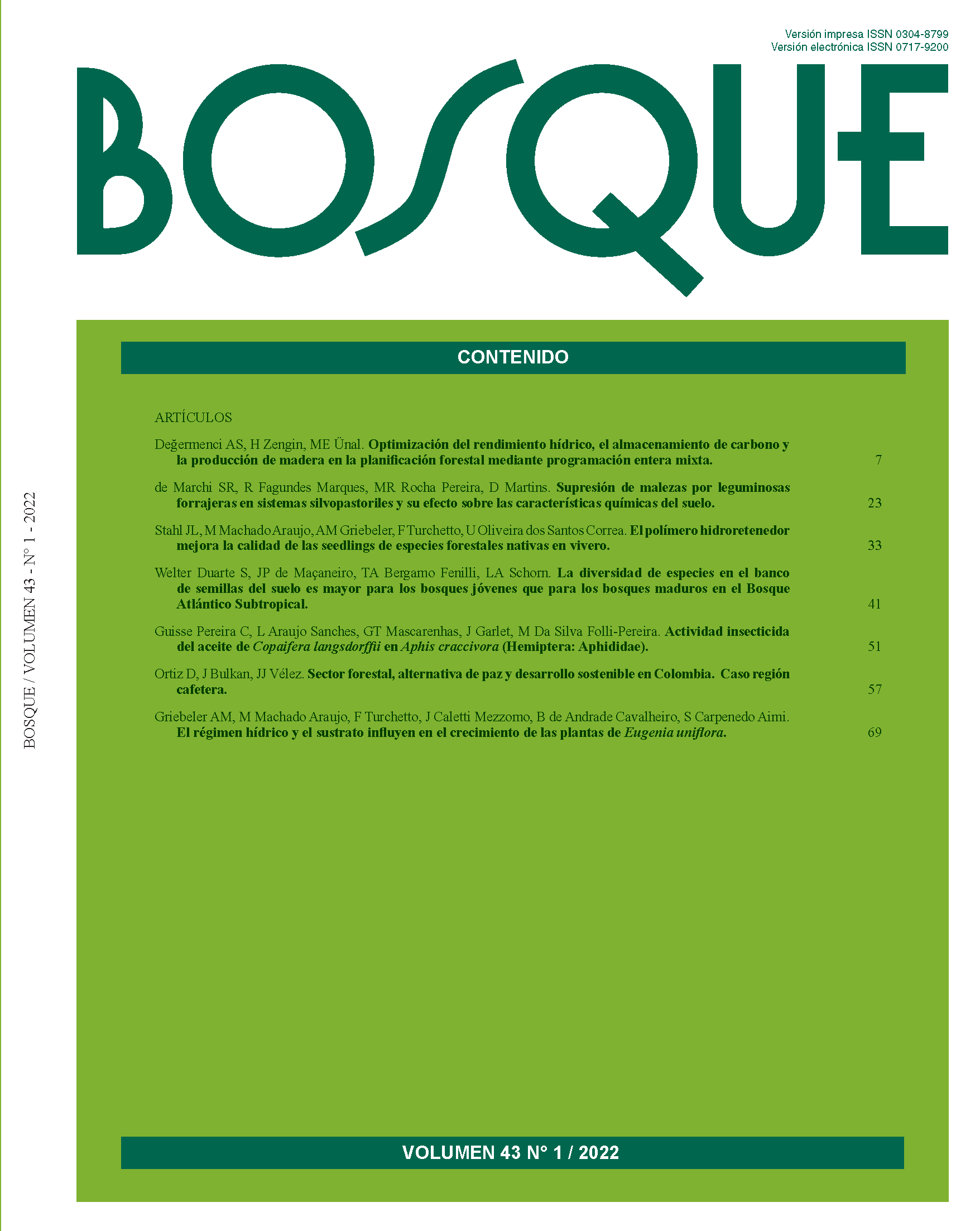Water regime and substrate influence the growth of Eugenia uniflora seedlings
Conteúdo do artigo principal
Resumo
Eugenia uniflora is a fruit tree of the Myrtaceae family, native to Brazil, Argentina and Uruguay that has high potential for use in landscape and environmental projects, food and pharmaceutical industry. However, information on the production of quality seedlings is still scarce. The objective was to identify the appropriate substrate and its characteristics, in relation to the water regime for the production of E. uniflora seedlings. The experiment was conducted in a randomized block design, in a factorial scheme, with four types of substrates being tested (S1: 100 % peat - commercial substrate (CS), S2: 80 % CS + 20 % Carbonized Rice Husk (CRH), S3: 60 % CS + 40 % CRH and S4: 40 % CS + 60 % CRH) and five water regimes (WR) (4, 8, 12, 16 and 20 mm day-1). Height, stem diameter, dry matter and Dickson’s quality index were evaluated. Factors influenced the measured attributes in isolation. Seedlings grown in S1 showed the highest growth and accumulation of dry matter. Results are 72 % and 41 % higher than those shown by S3. Eugenia uniflora showed superior growth and quality of seedlings under smaller WR. The use of peat-based substrate, combined with the use of 4 to 8 mm WR day-1, provides rapid development of E. uniflora seedlings in a nursery.

